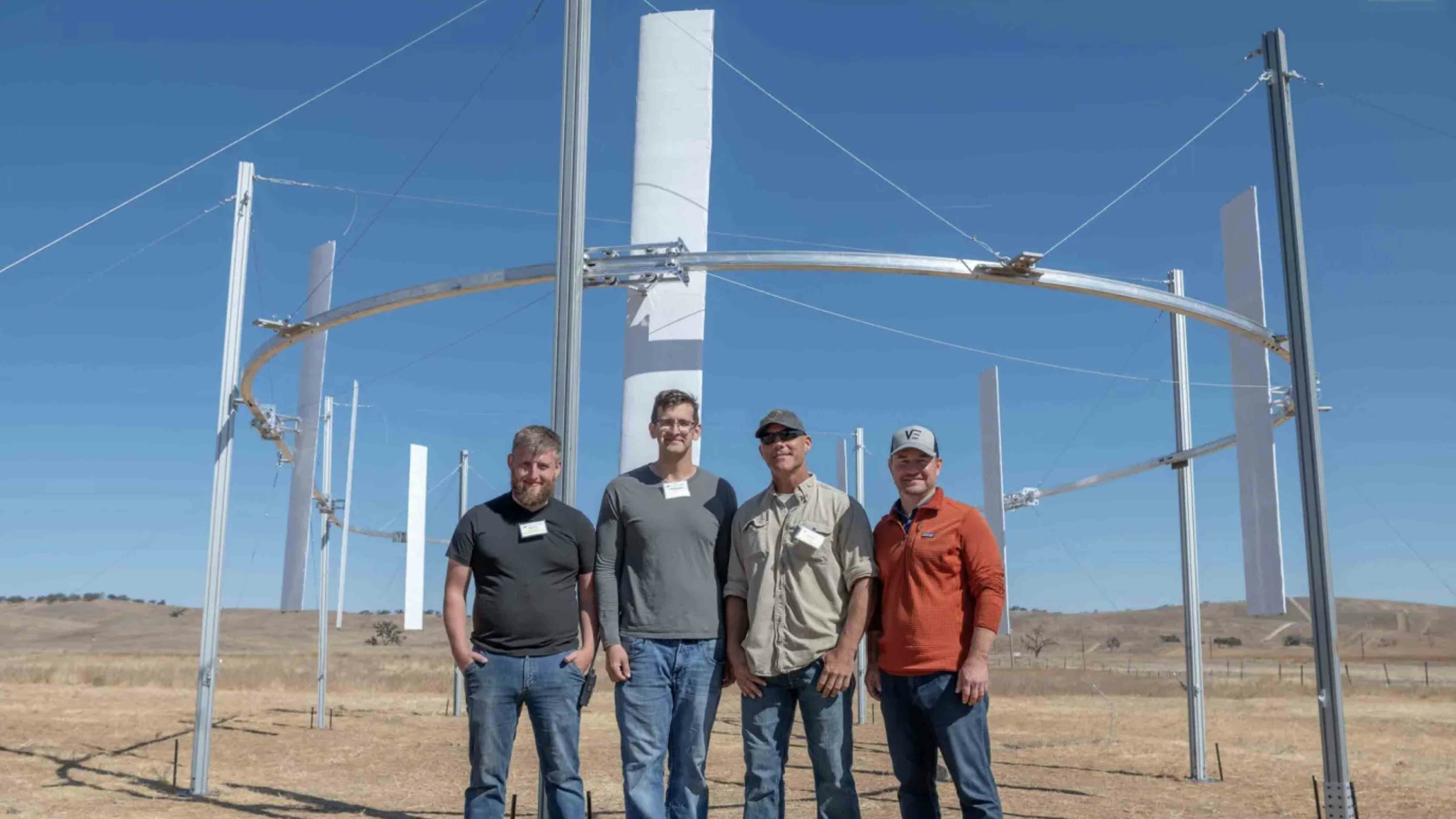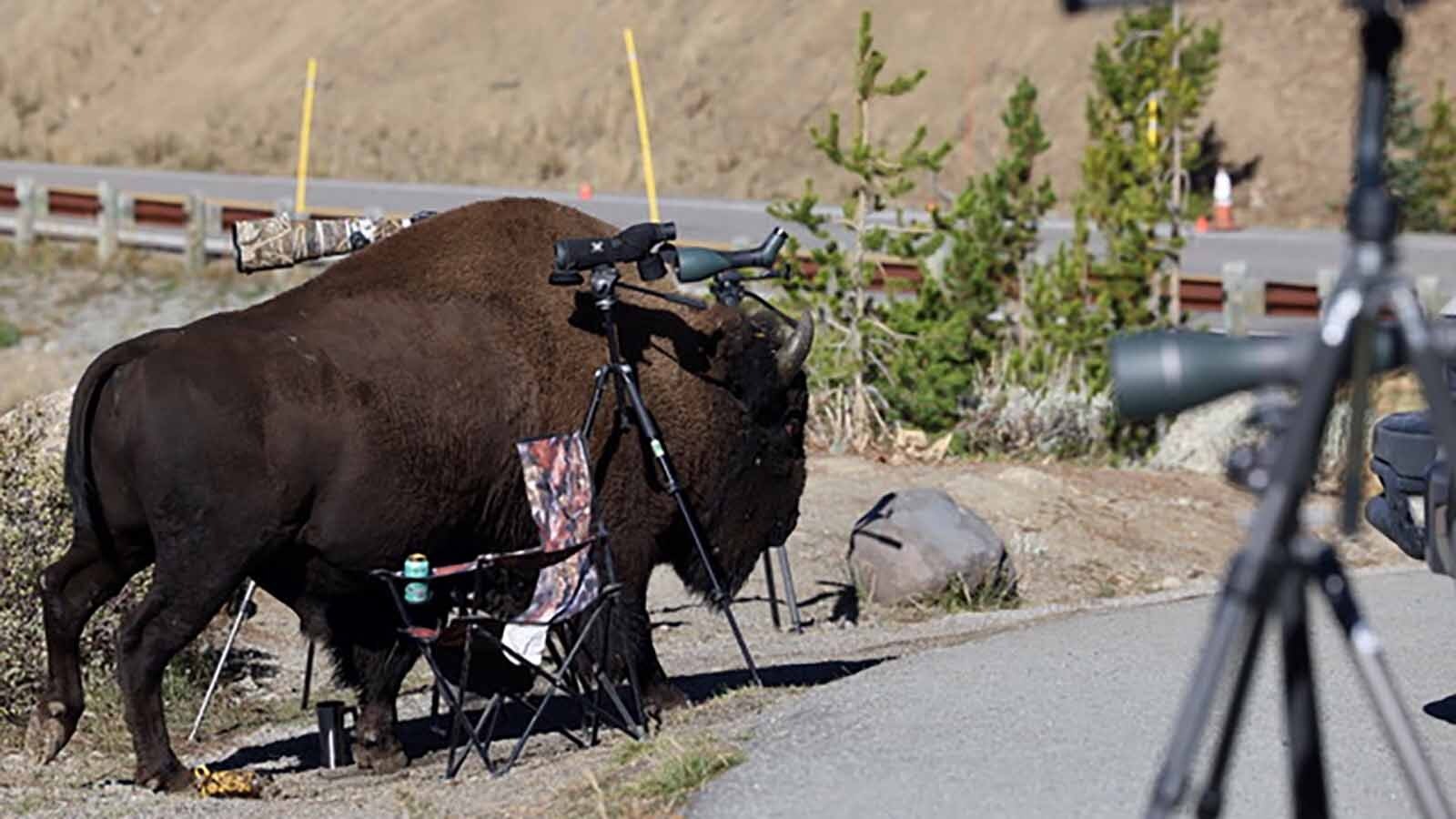It’s no secret President Donald Trump isn’t a fan of wind energy, describing turbines as “stupid” and “junk” while also advocating for no more wind towers in America.
A Wyoming-based company that’s developed innovative and much shorter turbine technology seems to be an exception, getting a big thumbs up from the Trump administration.
A senior Pentagon official has signed off on two Small Business Innovation Research applications submitted by the Laramie-based Airloom Energy, company officials told Cowboy State Daily.
That puts the company in the running for an award of $1.25 million for each application.
The endorsement was a topic of conversation as the company gathered with people in Laramie to celebrate construction of its prototype this summer. That wasn’t necessarily the biggest feather in the cap for the startup, either.
Airloom Energy CEO Neal Rickner said he is also negotiating with a data center that wants to help Airloom during this experimental phase.
“It looks like we’re going to have a customer for this project as well,” Rickner said. “We went looking for a customer for our 2027 project and found one for this project instead.
“And that’s a great development for us. Our primary objective was technical de-risking, but if we can also de-risk commercially, it’s a double bonus.”
Coupling their projects to Airloom is a way for the data center to get power sooner, Rickner said.
“To be clear, we haven’t inked a deal yet,” Rickner added. “But it’s a big deal. We’re also talking to developers in Wyoming who are building data centers and they’re looking for energy they can deploy rapidly.”
Rapid deployment is something Rickner believes Airloom will be able to provide.
“We’re not building something with 8,000 parts,” he said.
That means Airloom’s wind energy solution can be ready in more six to nine months once ordered, as opposed to a six- to seven-year timeline.
The Wind Energy Racetrack
Airloom Energy’s innovative design was a brainstorm by Robert Lumley of Laramie, who had it after having a beer in Berlin after a two-day conference on wind energy.
He sketched the idea out on the first clean scrap of paper he could find — the back cover of his conference book. It was like a child’s stick figure drawing and looked like some kind of space-age racetrack, with an oddball lineup of propellers racing around it.
The concept in Lumley’s mind, though, was much more elegant than his design on paper.
He could see small, adjustable propeller blades suspended in the air, tracing a physics-defined pattern along the track, gathering in wind energy all along the way.
Not only would the device do a better job than a traditional wind tower, it would also do so much more cheaply.
And it would be one-third the size of a wind tower, meaning most people likely wouldn’t even be able to see it even if was near a highway — unlike the giant windmills that now line some of Wyoming’s most scenic routes.
Airloom’s wind energy towers won’t be tall enough to require red flashing lights, nor will they have to be quite as close to the highway.
They can even be set up in remote areas that lack fully developed highways, Rickner has told Cowboy State Daily.
Why The Military Is Interested
It’s that latter aspect that is particularly appealing to the military, said Dave Belote, a retired U.S. Air Force colonel and managing partner of Dare Strategies, which is serving as a national advisor to Airloom Energy.
“I have a crazy background that no one could have ever designed,” Belote told Cowboy State Daily. “I was a government and foreign affairs major who, in the height of the Reagan buildup in 1984-85, struck up a conversation with an Air Force officer recruiter.”
Belote just did that to impress a buddy who was a Navy brat, but it proved to be a turning point in his life.
“I went through five years of college thinking I was going to law school, but somehow, instead I became a fighter pilot,” he said. “So, I lucked out in the fighter pilot world, and I got to command all of the battlefield airmen who were attached to Third Army Corps.”
That included deploying to Baghdad with the Third Army Corps during the Battle of Fallujah. It was during that experience that Belote began thinking about new ways to power military bases.
“You had to ship petroleum — diesel fuel — across the battle space, and one of the biggest uses of manpower in a contested environment is just guarding convoys and getting that gas out to these bases,” he said.
Belote wasn’t the only one having that same thought at that time, he added. Other high-up officials were thinking the same way and have been carrying that message to multiple administrations, from Reagan on through to Trump.
One of the jobs Belote was given after he retired was helping figure out just how close wind turbines, solar panels and geothermal sources of energy could be installed to a military installation without interfering with its operation.
What he quickly realized during that work was that wind towers did not mix well with a military base.
They interfere with radar, Belote explained, and the height presents a hazard to aircraft flying in, as well as the helicopters that are part of a military base’s defense plan.
“A big caveat anytime I go talk to the folks in the Pentagon with this is, I say, ‘We know we’ve got to see if this works first,’” Belote said. “But if it works, if the technology pans out, this is something you could put on the back of a large, sprawling military base.
“You could put your motor pool underneath it, and you could have wind energy generating on a base. You could create a deployable version that you can pack into a shipping container and then put this on a hillside in Afghanistan or Iraq to create that resilient energy structure right there and eliminate half to two-thirds of the petroleum you’re trucking across contested battle space.”
It’s Not About ‘Green,” It’s About Resilience
One thing Belote doesn’t mention when he’s talking about Airloom Energy is anything to do with “green.”
The company’s turbine also is not a tower, Belote is quick to point out. It’s not a tall device attached to a spinning turbine with three blades each as big as a semitruck whirling around in space.
“The people whose sole job is to ignore politics — I mean we have seen Trump to Biden to Trump,” Belote said. “(They) don’t care about green. The Department of Defense cares about mission accomplishment, and you need all forms of energy for mission accomplishment.”
That, Belote added, is a matter of saving lives when it comes to a military base.
“You can say, ‘Drill, baby, drill’ all you want, but if you have to put diesel fuel on trucks and drive it up to diesel generating sites or worse, in a contested environment, put young men and women in harm’s way to guard these convoys.
“That was the single biggest loss of life in Iraq over the last 20 years is young men and women getting killed guarding convoys, whether they were shot by snipers or IEDs (Improvised Explosive Devices).”
Finding a solution that helps reduce the need for such convoys strengthens the mission, Belote said.
“We introduced (Rickner) to the executive director of the Air Force’s Office of Energy Assurance, the gentleman whose sole job is to figure out, behind the fence, how do we guarantee 24/7 energy?” Belote said. “And it wasn’t just a knucklehead fighter pilot coming and saying, ‘Hey, look at this cool idea.’
“It was a knucklehead fighter pilot coming and saying, ‘Hey, look at this cool idea that already has investment from Bill Gates’ Breakthrough Energy and Tom Steyer.’”
The response, Belote said, was that, “I have been looking for a wind energy solution that we could put on a base, and this is the first one that I’ve been exposed to.”
That conversation took place six weeks ago, Belote said.
“So, this is the Trump administration,” Belote said. “This is the Trump administration. Now we don’t go jump up and down and say this is wind. We don’t say this is clean energy. We say this is energy resilience. This increases the lethality and readiness of your force.”

Solving Wind’s Problems
Phillip Gregory, a wind energy veteran of 26 years, is the guy in charge of turning the wrenches and building out Airloom Energy’s prototype.
“I came here in 1991, and I started at Foot Crick,” he told Cowboy State Daily, looking out into the field where he is soon going to be building a completely new type of wind energy device. “I am excited about this. They could solve a lot of wind energy’s problems.”
Among them, the costs and the complexity of a wind turbine.
Not only does it take lots of complicated parts to install a wind turbine, it takes lots of people.
Gregory estimated between 100 to 200 people would travel through a wind tower project before it’s all completed.
“Two people can build this,” he told Cowboy State Daily. “We’ll have eight of us going so that it goes faster, but two people can build a lot of these.”
Rickner, meanwhile, told Cowboy State Daily that he’s already thinking about the steps beyond the prototype and about how it could be designed and built in Wyoming.
“I’m getting a little ahead of myself here,” he said. “But I would say, for future plans, there’s no reason why we couldn’t partner with WyoTech to develop a technician program where we can set up a factory here and train the workforce and do the production of most of the Airloom turbine here.”
The wings on the turbine racetrack, Rickner added, are fairly simply designed, patterned off of World War II era wings.
“It is a super simple construction, so it’s not at all impossible to imagine that we build a facility here and train a workforce here,” he said. “(That’s) based on my experience from my previous companies. I’ve not done any of the planning for that yet to really map out what that would take. But I can see a pathway where we stay here.”
Rickner added that he doesn’t think he’d be nearly as far along with the project outside of Wyoming.
“Everything from having available land to having a permitting process that was established and available to us,” he said. “If I’d tried to build this in other places it would have taken like two years, and here, we did it in like eight months.
“I don’t know where else we could have done it that fast, maybe Texas, but it’s truly a unique aspect of Wyoming that a tiny little company with a limited budget and a limited amount of time (was able) to move so fast.”
Renée Jean can be reached at renee@cowboystatedaily.com.









